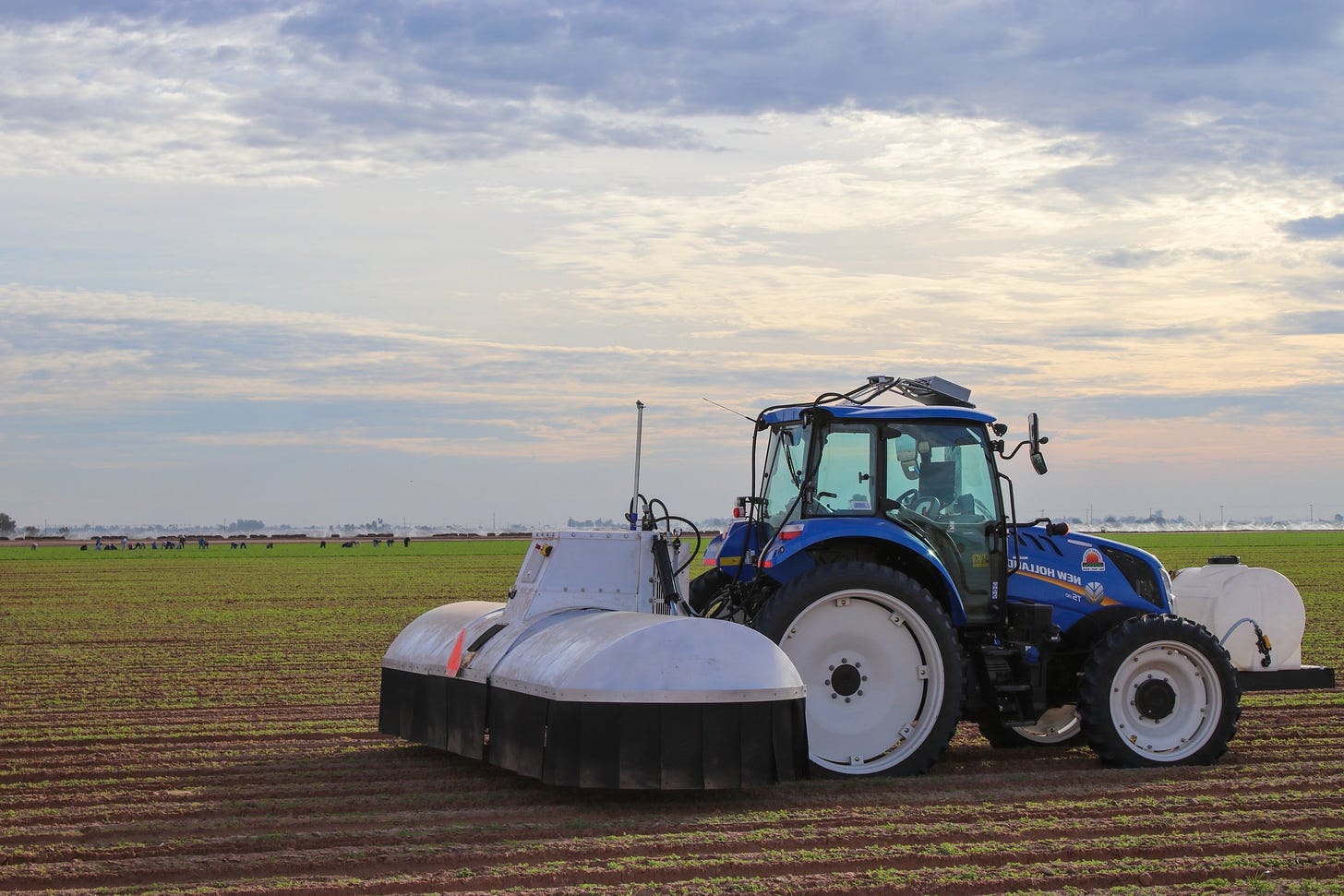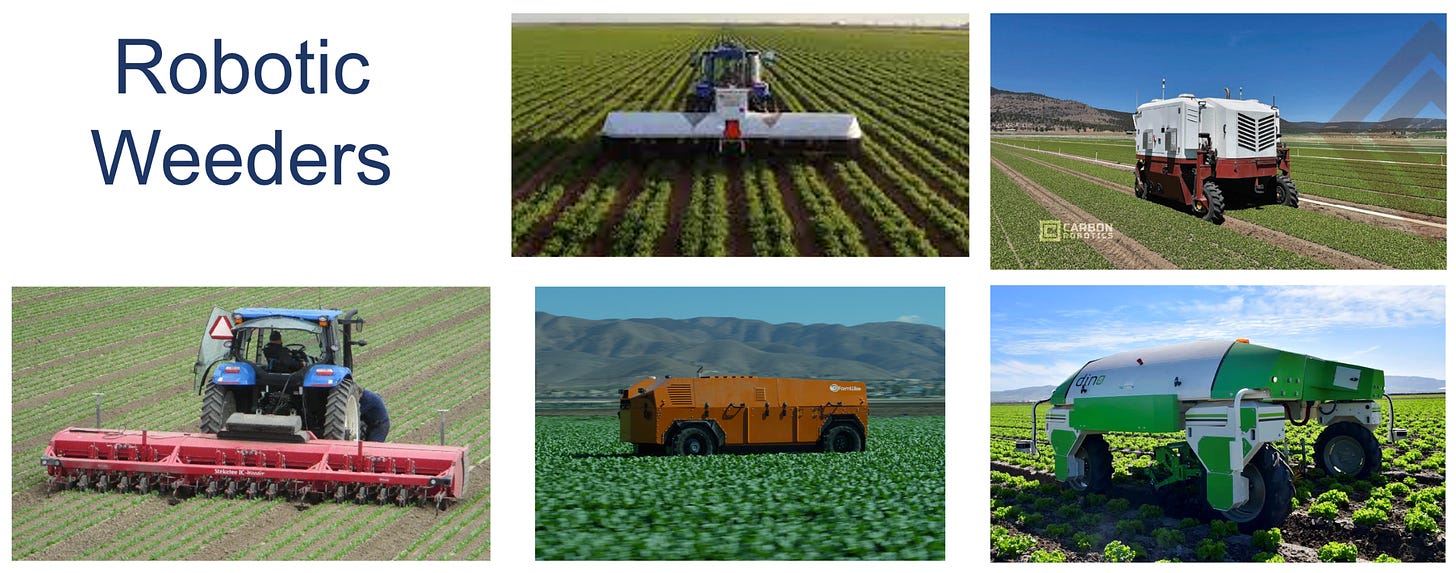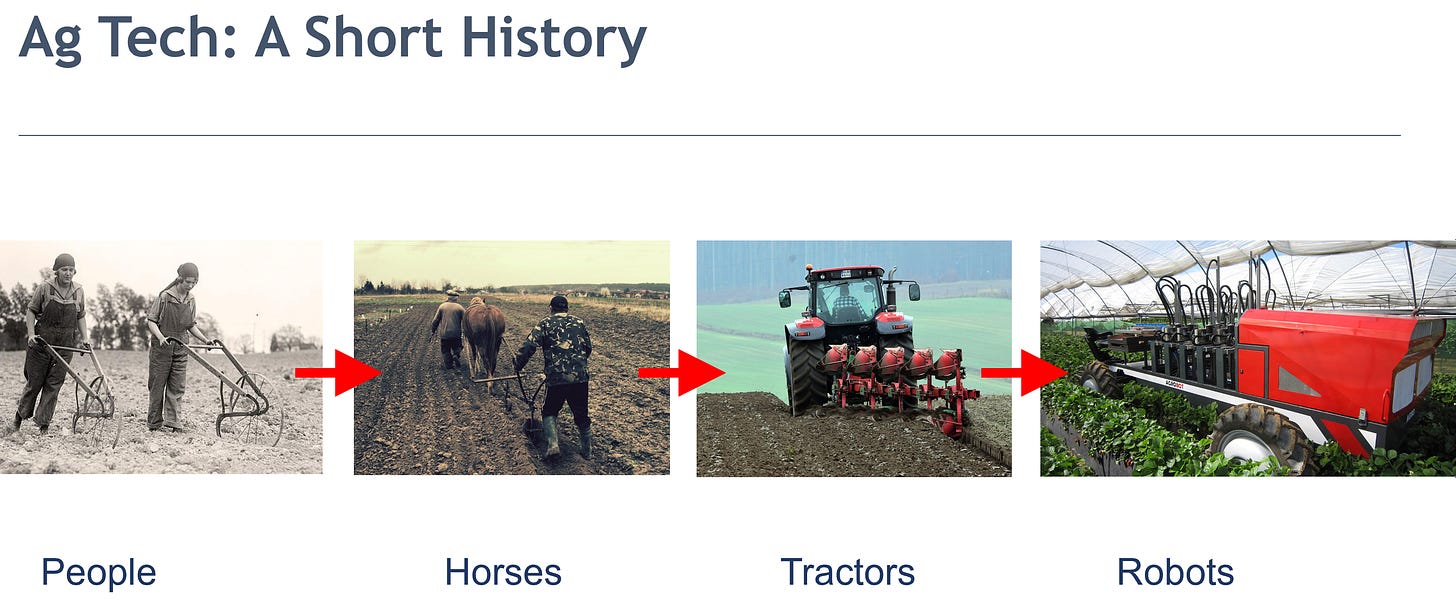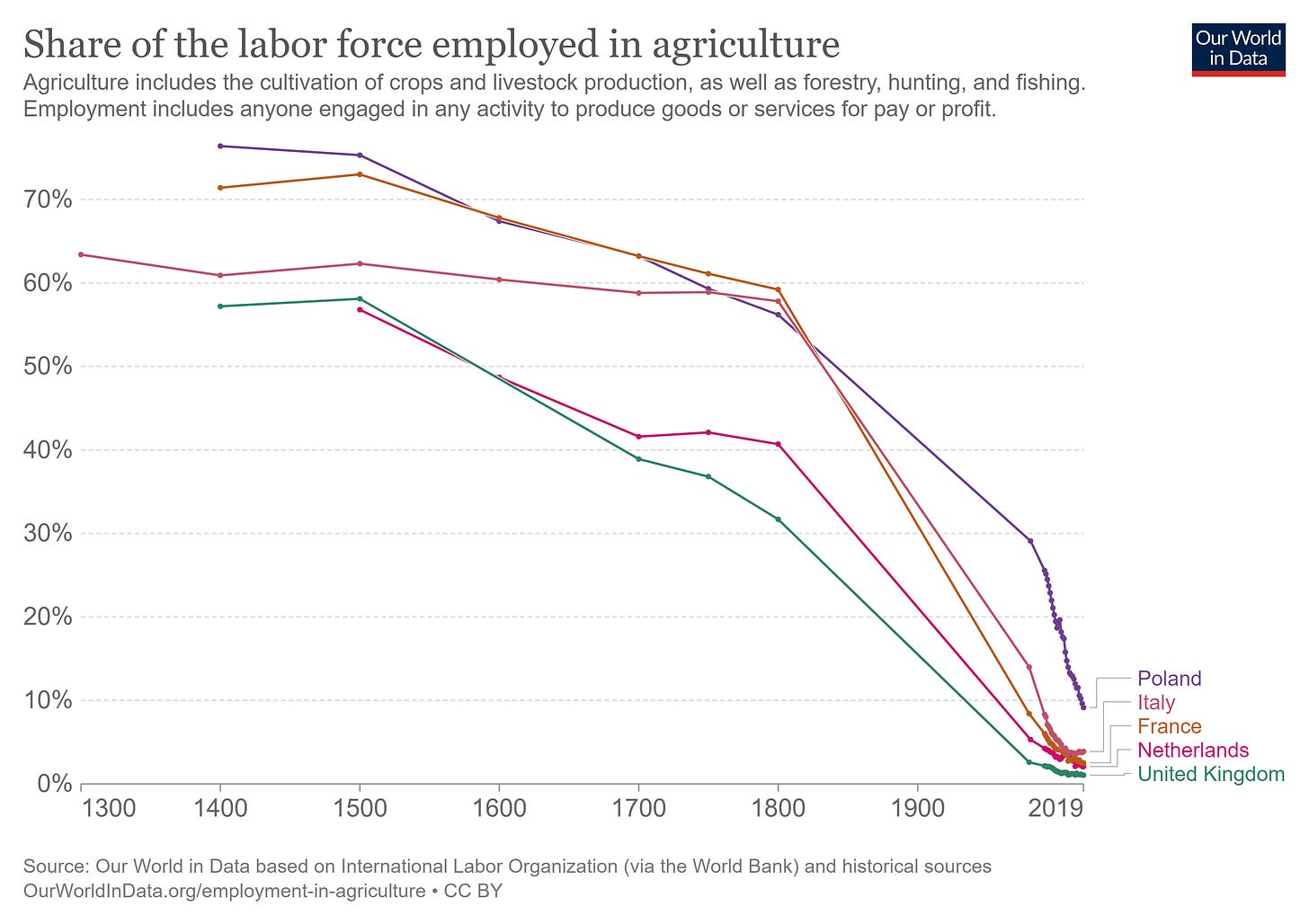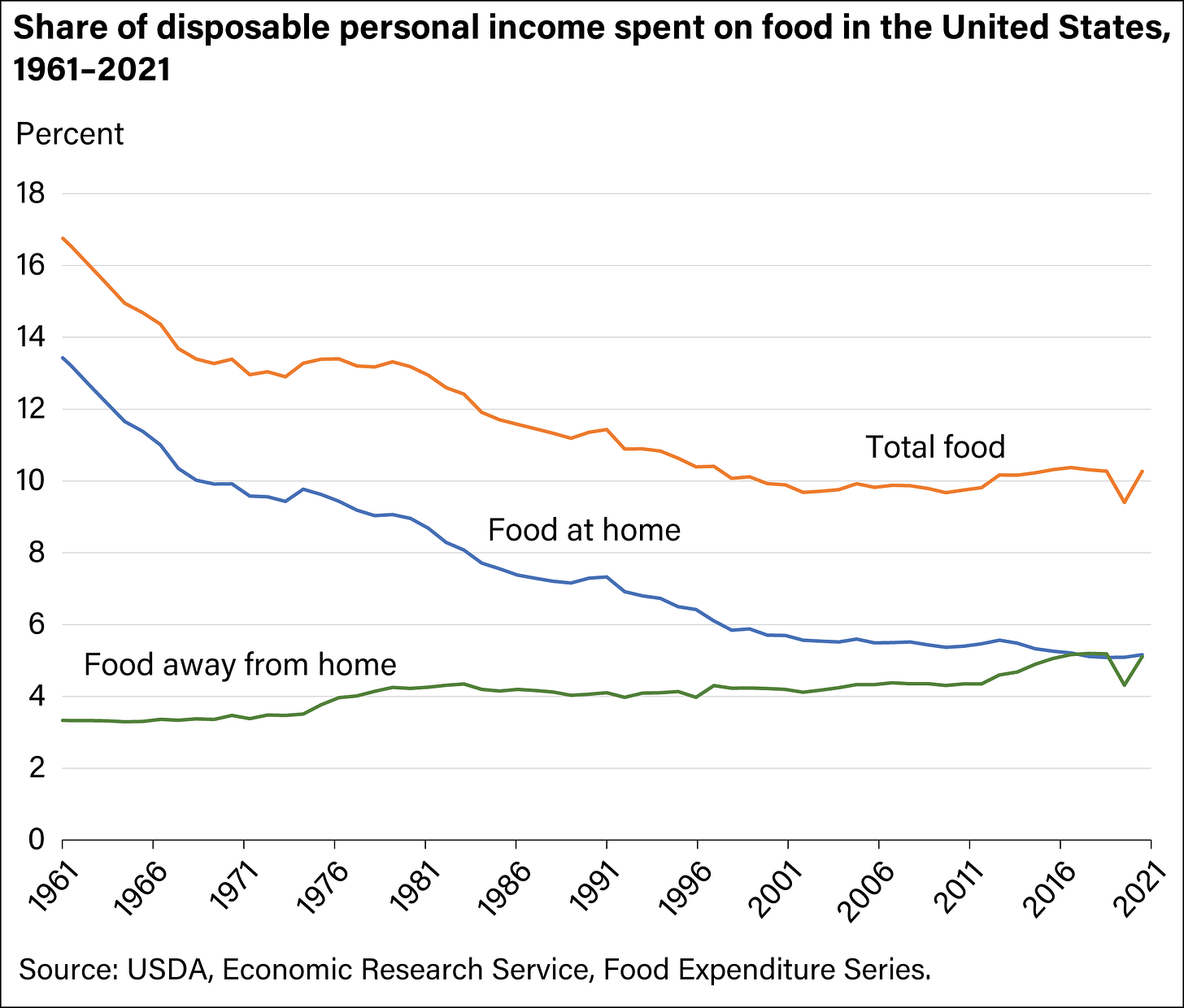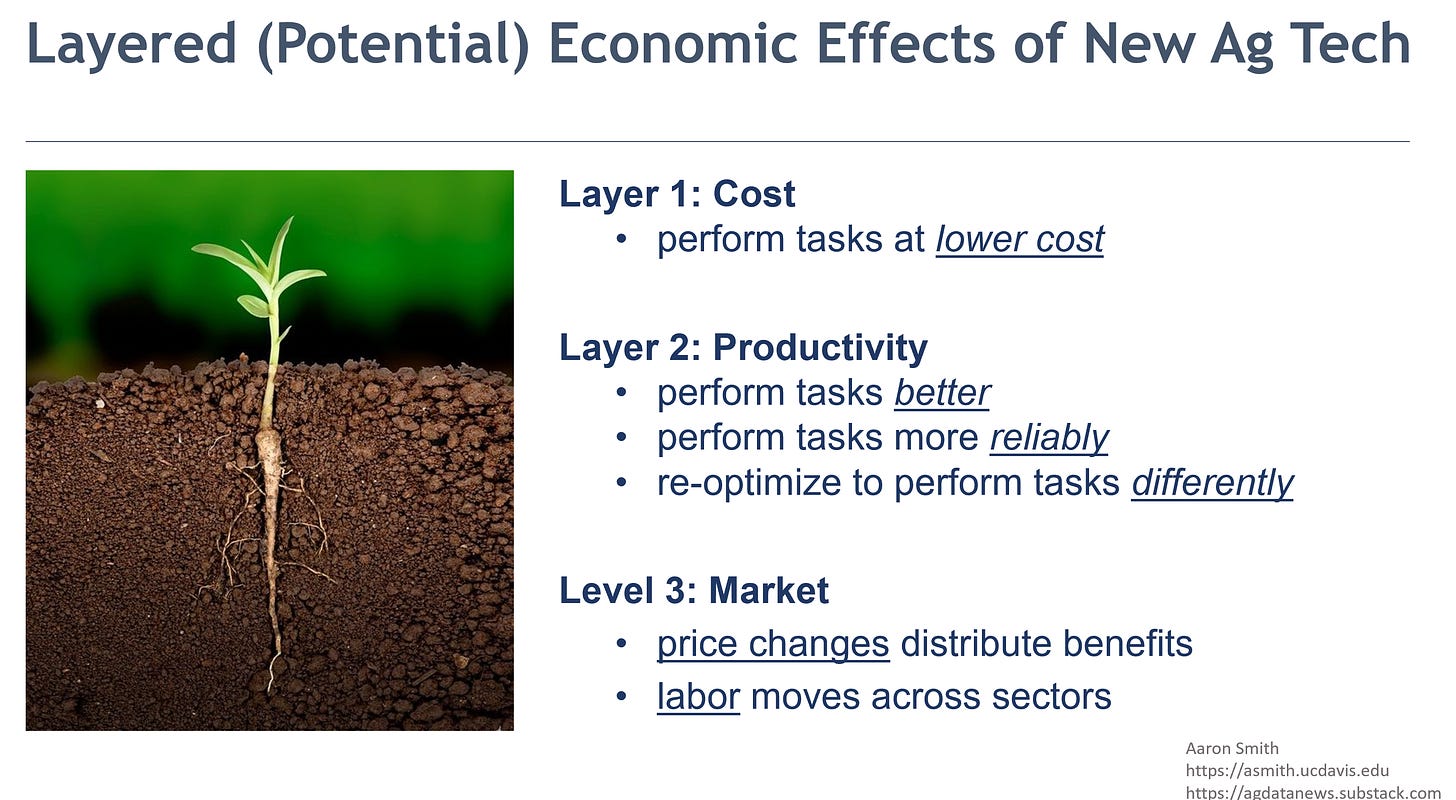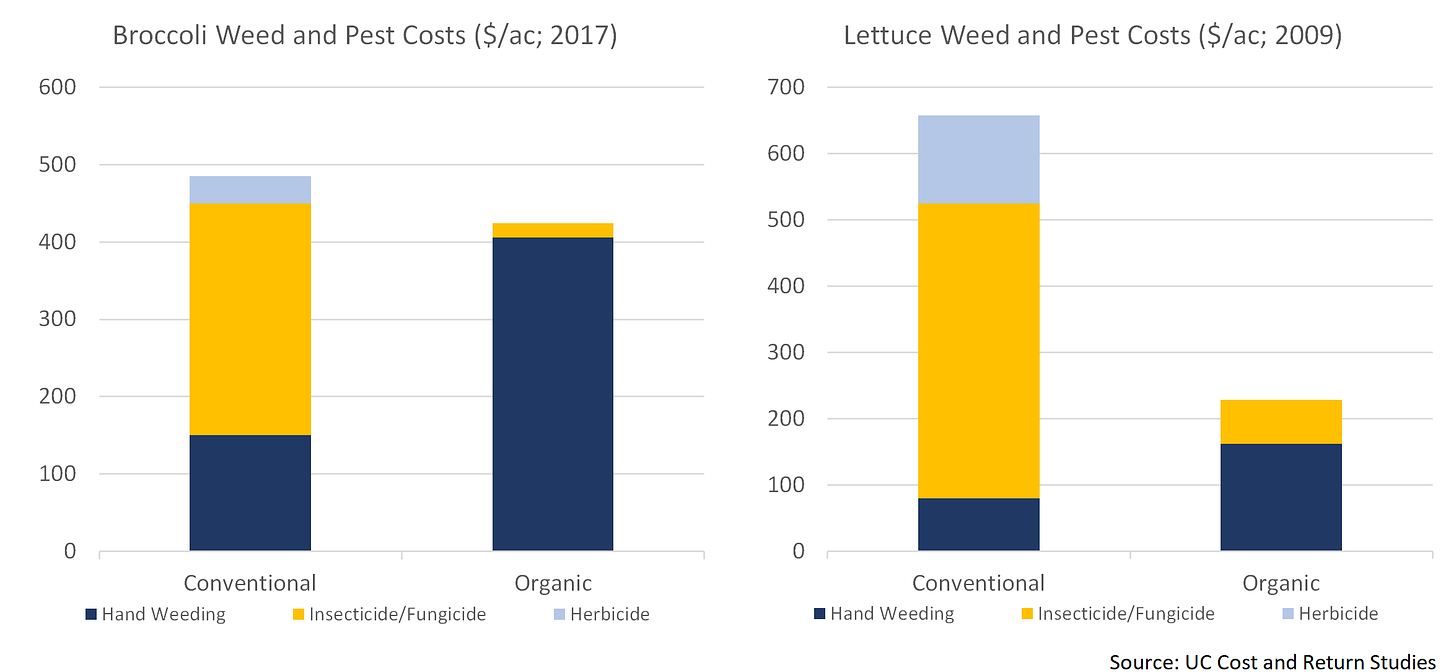

Discover more from Ag Data News
Robots for Weed Control
Growing up on a sheep farm in New Zealand, two tasks that sometimes fell to me were digging out thistles and spraying barley grass. It was important to keep these weeds from spreading, and teenagers were the lowest-cost weed eliminator.
In modern agriculture, robots are increasingly being used for weeding. They use computer vision to identify what is a weed and what is not. They have various ways of dealing with the weeds they see; some spray them, some dig them out, and others zap them with a laser.
Robotic weeders are one example of the next revolution in Ag Tech, which is being driven by artificial intelligence and robotics. These and related technologies will be revolutionary for food and the environment.
This week I spoke at the California Weed Science Society meeting about the economics of agricultural technology. In this article, I'll give you the short version of my talk.
Advancements in agricultural technology have vastly reduced the percent of the labor force working in agriculture. A few hundred years ago, up to three quarters of the labor force worked in agriculture. In most rich countries, the agricultural share of the labor force is now less than 10%. In the United States, 1.3% of the labor force currently works in agriculture, down from 50% in 1870.
Technologies like tractors made it possible for each worker to produce a whole lot more food. This increase in productivity caused an abundance of food that has lowered the relative food price. Americans can buy five times as much milk per hour of work than they could 100 years ago. Americans spend just 10% of their household budget on food now, down from 17% in 1960.
Will the new Ag Tech revolution play out the same way?
To answer this question, I categorize how new technology affects on-farm activities.
First, farmers will adopt a new technology if it lowers their costs. Replacing hand weeding crews with robots enables a farmer to remove weeds at a lower cost.
Second, new technologies can improve productivity if they perform tasks better and more reliably than the older technology, and if they allow farmers to perform tasks differently, e.g., weed on a more profitable schedule.
Finally, as technology becomes widely adopted, it affects markets. Higher productivity means lower food prices, higher land prices, and higher wages for the remaining workers.
Robotic weeding is currently particularly attractive for organic producers. Restrictions on what organic producers can spray means that they spend much more on hand weeding than do conventional producers. Robots have the potential to more than halve weeding costs, so we're looking at $100-$300 per acre in cost savings for lettuce and broccoli.
Now, $100-$300 per acre may sound like a lot, especially if you're used to thinking about corn and soybeans where total operating costs aren't much more than that. However, for specialty crops such as broccoli or lettuce, these savings amount to about 2% of operating cost.
This means that potential productivity gains are really important to the value of the weeder. If the weeder can get you a 2% increase in yield, then it is twice as valuable as it would seem based only on the cost savings.
I don't know the productivity benefits of robotic weeding, but I am working on a USDA-funded project with Verdant Robotics to find out. Here's me outstanding in a field with Verdant's weeder in the distance.
As robotic weeding and other AI technologies proliferate, I think many of their effects are likely to be similar to those of the tractor and other technological revolutions. We will see less labor and more productivity in agricultural production.
Whether those benefits flow to consumers in the form of lower food prices or to producers in the form of higher land values depends on elasticities (as I emphasized in a recent Ag Data News article).
Specifically, when farmers use their increased productivity to produce more, then they will need to accept a lower price to encourage consumers to buy that increased production. If they have to drop the price a lot to increase consumption, then we'll see consumers benefit with lower food prices (i.e., if demand is inelastic). If they only have to drop the price a little to increase consumption, then we'll see only moderate benefits to consumers and more benefits to producers and owners of agricultural land (i.e., if demand is elastic).
AI and robotics may have one effect that is different from past technologies: environmental improvement. Precision application of chemicals, fertilizers and water will help prevent the overuse that causes environmental problems, not to mention raises costs for farmers.
Postscript: For those looking to understand the general economic effects of automation, I recommend recent work by Daron Acemoglu and Pascual Restrepo.




